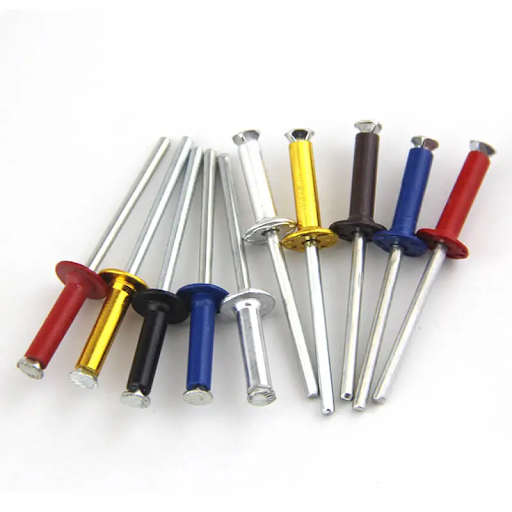Riveting is a tried-and-true fastening technique commonly associated with metalworking, but its application extends far beyond just metals. As the demand for lightweight, durable, and cost-effective materials grows, plastics have become a staple in industries like automotive, electronics, and consumer goods. With this shift, the question arises: can riveting, a method originally designed for metals, work effectively on plastic materials?
The short answer is yes, but there’s more to it. Riveting plastics requires a deep understanding of both the material’s properties and the nuances of the riveting process. Unlike metals, plastics are softer and more flexible, which means they demand specific tools and techniques for successful bonding. This article explores the process of riveting plastics, evaluates its effectiveness, and provides practical tips to ensure optimal results. Whether you’re working in a professional manufacturing setting or tackling a DIY project, this guide aims to help you navigate the world of plastic riveting with confidence and clarity.
What is Riveting for Plastics?
Riveting is a mechanical fastening process where a rivet—a small cylindrical pin—is used to join two or more materials by inserting it into pre-drilled holes. The rivet is then deformed at one end to secure the connection. This method is known for creating strong, vibration-resistant bonds, making it a preferred choice in applications where durability is key.
When riveting plastics, the process operates on the same principle but requires adjustments to accommodate the material’s properties. Plastics are inherently softer and less rigid than metals, meaning the wrong type of rivet or excessive force can easily damage the material. To address this, specialized rivets—often made from softer materials like aluminum or even plastic—are used to ensure compatibility.
One of the primary advantages of riveting plastics is its versatility. Unlike adhesives, which may degrade over time, or welding, which is limited to certain plastic types, riveting provides a permanent and reliable bond across a variety of applications. Whether assembling consumer electronics or creating lightweight automotive parts, plastic riveting is a go-to method for manufacturers seeking efficiency and durability.
Plastics also benefit from the lightweight nature of riveted joints. By using rivets for plastic, manufacturers can achieve strong, stable connections without adding significant weight to the final product. This makes riveting especially popular in industries where minimizing weight is critical, such as aerospace and transportation. However, the process is not without its challenges, which we’ll explore in the next section.
Does Riveting Work Well on Plastic Materials?
Riveting works remarkably well on plastic materials when the right tools, techniques, and preparation are applied. Plastics are increasingly favored in manufacturing for their versatility, affordability, and ease of fabrication, and riveting provides a practical solution for joining these materials in various applications. However, success depends on understanding the unique characteristics of plastics and tailoring the riveting process accordingly.
One key factor in effective plastic riveting is the type of plastic being used. Thermoplastics, such as polyethylene, acrylic, and polycarbonate, are generally well-suited for riveting because they can withstand deformation without cracking. These plastics are flexible enough to handle the pressure exerted during the riveting process, making them ideal for applications ranging from household appliances to automotive components. Conversely, thermosetting plastics, which are more brittle and rigid, require careful handling to avoid damage.
Another crucial element is the choice of rivets. Unlike traditional metal rivets, rivets for plastic are specifically designed to accommodate the softer, more flexible nature of plastic materials. Blind rivets, push rivets, and snap rivets are commonly used because they create strong connections without exerting excessive pressure. These rivets are often made from plastic or lightweight metals like aluminum, ensuring a secure bond without compromising the integrity of the material.
The success of riveting plastic also depends on precise preparation and execution. Misaligned holes, excessive pressure, or using incompatible rivets can lead to issues such as cracking, deformation, or a weak joint. Proper planning and the use of tools designed specifically for plastic riveting can mitigate these risks and ensure a durable, long-lasting connection.
Common Benefits of Riveting Plastic Materials
Riveting plastics offer several distinct advantages over other fastening methods. First and foremost, it provides a permanent solution that resists vibration and loosening, making it ideal for high-stress environments. Unlike adhesives, which can degrade over time or under certain conditions, rivets maintain their strength and stability for the lifespan of the product.
Additionally, the process is relatively simple and cost-effective. Riveting does not require expensive equipment or extensive training, making it accessible to both large-scale manufacturers and small-scale users. Moreover, riveted joints can be disassembled and reassembled if needed, adding to their practicality.
Despite its many benefits, riveting plastics also presents challenges that must be addressed to achieve the best results. These include material cracking, thermal expansion, and alignment issues, all of which can weaken the joint if not properly managed.
Tips for Riveting Plastic Effectively
Riveting plastic materials requires careful consideration of several factors, from the type of rivet used to the techniques applied during installation. Following these tips can help ensure a strong, durable connection and minimize the risk of damage to the plastic.
- Select the Appropriate Rivet Type
Choosing the right rivet is critical to the success of any plastic riveting project. Rivets come in various designs, each suited to specific applications. For plastics, lightweight and flexible rivets, such as push rivets or blind rivets, are ideal. These rivets are designed to grip the softer surfaces of plastic without causing damage. Additionally, rivets made from plastic or lightweight metals like aluminum are often the best choice for ensuring compatibility.
The size and length of the rivet are equally important. A rivet that is too short will not secure the materials effectively, while one that is too long may create unnecessary stress on the plastic. Always measure the thickness of the materials being joined and select a rivet that matches those dimensions.
- Match the Rivet to the Plastic Type
Not all plastics respond to riveting in the same way. Softer plastics like polypropylene and polyethylene require different rivets and techniques than harder materials like acrylic or polycarbonate. Conducting research on the compatibility of specific rivets with your chosen plastic can save time and prevent costly mistakes.
For example, snap rivets work well with softer plastics because they expand gently to create a secure connection. In contrast, breakstem rivets may be better suited for harder plastics due to their strong grip and ability to resist deformation.
- Prepare Precise Holes
Accurate hole preparation is essential for effective riveting. Misaligned or uneven holes can weaken the connection and create stress points that may lead to cracking. Use drill bits specifically designed for plastics to avoid causing heat buildup, which can warp or melt the material.
When drilling, ensure that the holes are slightly larger than the diameter of the rivet to allow for proper insertion. However, avoid making the holes too large, as this can compromise the strength of the joint.
- Apply Even Pressure
Plastics are more susceptible to damage from excessive force than metals, so it’s crucial to use tools that allow precise control over the pressure applied during riveting. Adjustable rivet guns are an excellent choice, as they enable you to fine-tune the force to match the properties of the plastic.
Using even pressure also helps ensure that the rivet expands evenly, creating a secure and reliable connection. Uneven pressure can lead to deformation or an uneven joint, both of which can weaken the bond over time.
- Conduct Tests Before Final Assembly
Before riveting your final product, it’s a good idea to conduct tests on scrap material. This allows you to evaluate the effectiveness of your chosen rivet and technique, making adjustments as needed. Testing can also help identify potential issues, such as cracking or misalignment, before they affect the final assembly.
By taking the time to test and refine your approach, you can achieve a higher-quality result and reduce the risk of errors.
Conclusion
Riveting is a versatile and effective method for joining plastic materials, offering a permanent and reliable solution for a wide range of applications. Whether you’re assembling lightweight consumer goods or durable automotive components, plastic riveting provides the strength and stability needed to meet the demands of modern manufacturing.
However, the success of riveting plastics hinges on understanding the unique properties of these materials and tailoring the process accordingly. From selecting the right rivets for plastic to preparing precise holes and applying even pressure, every step plays a crucial role in achieving a strong, durable bond.
By following best practices and paying attention to detail, you can overcome the challenges of riveting plastics and unlock its full potential. Whether you’re a seasoned professional or a DIY enthusiast, mastering the art of plastic riveting opens the door to endless possibilities in design and fabrication. With the right tools, techniques, and knowledge, riveting can become an invaluable part of your toolkit for working with plastic materials.



